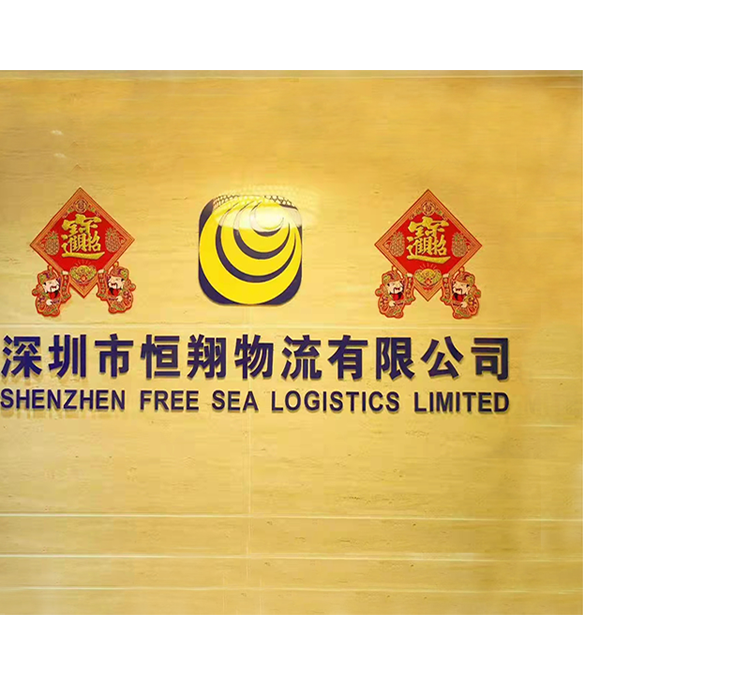The explosive rise of e-commerce has reshaped global trade. Nowhere is this more evident than on Amazon. Brands competing on Amazon face enormous pressure to ship fast, stay in stock, and optimize cost. In this hyper-competitive space, logistics is no longer just backend support—it’s a core differentiator.
This shift has fueled the rise of digital freight forwarding. Unlike traditional freight agents, tech-enabled shipping partners combine automation, real-time visibility, and smart planning. For Amazon sellers, these services reduce friction, lower costs, and boost customer ratings.
At Free Sea, we empower global brands selling on Amazon with digital freight solutions tailored to the platform's strict requirements. In this article, we explore how freight forwarding has evolved, the benefits of digitalization, and why Amazon sellers must adapt.
What Is Digital Freight Forwarding?
Digital freight forwarding refers to the use of online platforms, automation tools, and cloud-based systems to manage international logistics. Instead of relying solely on phone calls, faxes, or paper trails, digital freight forwarders streamline booking, documentation, tracking, and customs clearance through smart software.
The key features of tech-enabled freight forwarding include:
Real-time shipment tracking
Instant online quotes
Automated document generation
Integrated customs and compliance tools
API connectivity with e-commerce platforms
For Amazon sellers—especially those using Fulfillment by Amazon (FBA)—digital forwarding helps them stay agile, responsive, and profitable.
Why Amazon Brands Need a Specialized Freight Strategy
Selling on Amazon demands precision. Unlike B2B shipping, Amazon enforces strict rules for inbound shipments. Each product must arrive on time, labeled correctly, and routed through approved centers. Failing to meet those standards results in delays, chargebacks, or even delisting.
Traditional freight forwarders often lack Amazon-specific knowledge. In contrast, digital shipping agents like Free Sea specialize in:
FBA prep and labeling
Amazon warehouse appointments
Split shipment handling
Seller Central integration
Region-specific compliance
We tailor freight plans based on product type, seasonality, and Amazon's fulfillment center locations. Our clients stay competitive without wasting time chasing carriers or documents.
Benefits of Tech-Enabled Freight Forwarding for Amazon Sellers
1. Faster Booking, Reduced Errors
With instant quote tools and automated input fields, digital freight forwarders simplify bookings. Sellers no longer waste hours waiting for rate sheets or replying to lengthy email chains.
At Free Sea, our online dashboard lets users submit shipment details, receive quotes, and confirm bookings in minutes. Error checking and validation features reduce the chance of incorrect dimensions, HS codes, or consignee details.
2. Real-Time Visibility Across the Supply Chain
Amazon brands need to plan inventory, run promotions, and maintain delivery promises. But without live tracking, that becomes guesswork.
Digital freight systems provide GPS-linked updates, port status, and ETAs. Notifications alert sellers of delays, giving them time to respond. With Free Sea’s tracking dashboard, you know where every container, pallet, or box is—at any time.
3. Customs Compliance Made Easy
Clearing customs can delay shipments and incur costs. For Amazon sellers shipping across borders, staying compliant is essential.
Our digital platform includes auto-filled documents, country-specific compliance tips, and digital clearance coordination. Customs brokers communicate directly through the dashboard, eliminating miscommunication.
4. Integration with Amazon Systems
Tech-enabled freight partners often integrate directly with Amazon Seller Central or third-party logistics (3PL) providers. This ensures that labels, carton counts, and tracking match Amazon’s inventory intake standards.
Free Sea offers optional integration with Amazon shipment IDs, FBA labeling, and 3PL warehousing before final delivery to Amazon fulfillment centers.
5. Flexible Mode Selection and Cost Optimization
Through AI-powered routing tools, we compare air freight, sea freight, and rail or multimodal options. Whether the shipment is urgent or high-volume, sellers receive dynamic pricing with lead time estimates.
This flexibility helps Amazon brands make decisions based on margin impact, urgency, or shipping trends—rather than guesswork.
The Shift from Traditional to Digital Freight Forwarding
For decades, freight forwarding was dominated by legacy practices. Rate negotiations happened offline, and tracking was manual. For modern Amazon sellers, that model no longer works.
In contrast, tech-enabled agents offer:
| Feature | Traditional Forwarder | Digital Freight Agent |
|---|---|---|
| Booking Speed | Slow (1–2 days) | Instant (online) |
| Tracking | Limited or manual | Real-time GPS, API feeds |
| FBA Experience | Limited | Specialized expertise |
| Cost Transparency | Variable | Upfront, automated quotes |
| Documentation | Manual, error-prone | Auto-generated, accurate |
| Customer Support | Office hours only | 24/7 chat and portal |
The Amazon ecosystem favors speed, predictability, and traceability—all strengths of digital shipping models.
Key Use Cases: How Amazon Sellers Benefit from Free Sea’s Services
1. Brand Launches and Product Scaling
New Amazon brands often underestimate the logistics needed to scale. Our digital solutions help them start lean, then grow fast. We optimize first shipments via air and later shift to sea or rail as volumes increase.
2. Amazon Global Expansion
Sellers expanding from the US to Europe or Asia face complex customs and routing. We guide them through country-specific import requirements, VAT registration, and Amazon fulfillment center matching.
3. Seasonal and Promotional Shipping
During peak seasons like Prime Day or Q4, shipping capacity is limited. Our predictive freight tools reserve space in advance, avoiding spot-rate hikes. Clients also get early alerts for potential bottlenecks.
4. Diversified Inventory Strategies
Smart sellers now use multiple FBA centers, third-party warehouses, and DTC channels. Free Sea enables multi-destination planning, with integrated freight tracking for all destinations in one place.
Market Outlook: The Future of Digital Freight for Amazon Sellers
According to industry research, digital freight forwarding will grow at 23.6% CAGR by 2030, driven largely by e-commerce. Amazon’s global network expansion, combined with rising seller competition, will continue fueling demand for smarter shipping models.
Additional trends shaping the future include:
Automation of customs and documentation
Carbon-tracked shipping for ESG compliance
Integrated returns and reverse logistics
Data-driven carrier performance scoring
End-to-end visibility, including inland drayage
Amazon sellers who adopt digital logistics early will outperform slower competitors, especially during global disruptions or seasonal volatility.
Why Partner with Free Sea?
We’re more than a freight forwarder—we’re a logistics innovation partner. Here’s what sets us apart:
Amazon-Focused Solutions: We know FBA, warehouse cut-offs, and ASN protocols inside out.
24/7 Support: Real humans assist you—anytime.
Transparent Pricing: No hidden fees or surprise surcharges.
Tech-First Mindset: Our platform evolves with seller needs.
Whether you're launching your first SKU or managing global freight lanes, Free Sea keeps your brand moving—fast, reliably, and smartly.
Conclusion: Digital Shipping as a Competitive Edge
In today’s Amazon marketplace, speed and precision are everything. Sellers who embrace tech-enabled freight forwarding gain an operational edge. They reduce shipping risk, maintain better stock levels, and protect their brand reputation.
With platforms like Free Sea, logistics becomes a growth engine, not a bottleneck. Digital tools, Amazon-specific knowledge, and global freight experience work together to simplify every shipment.























